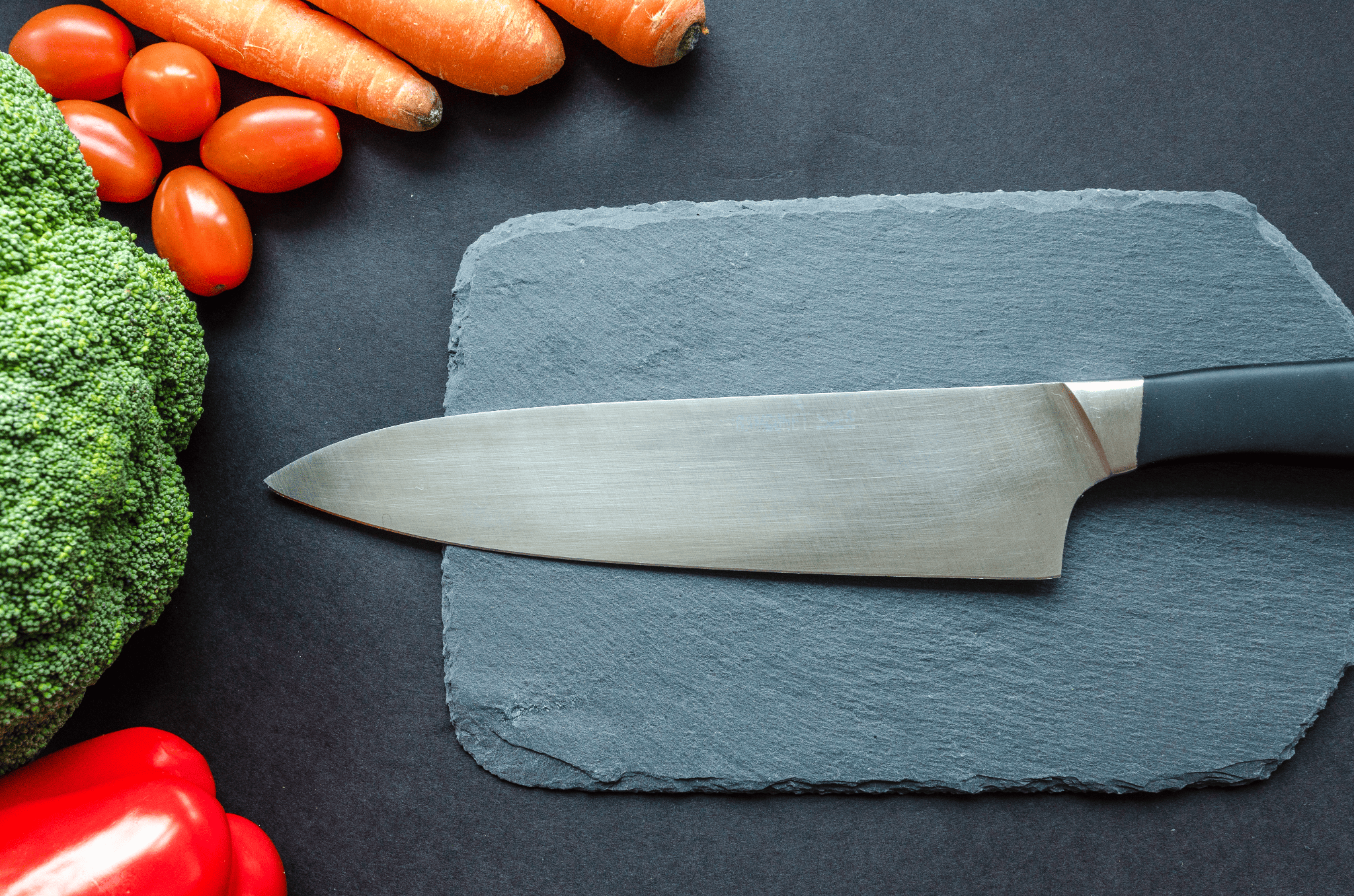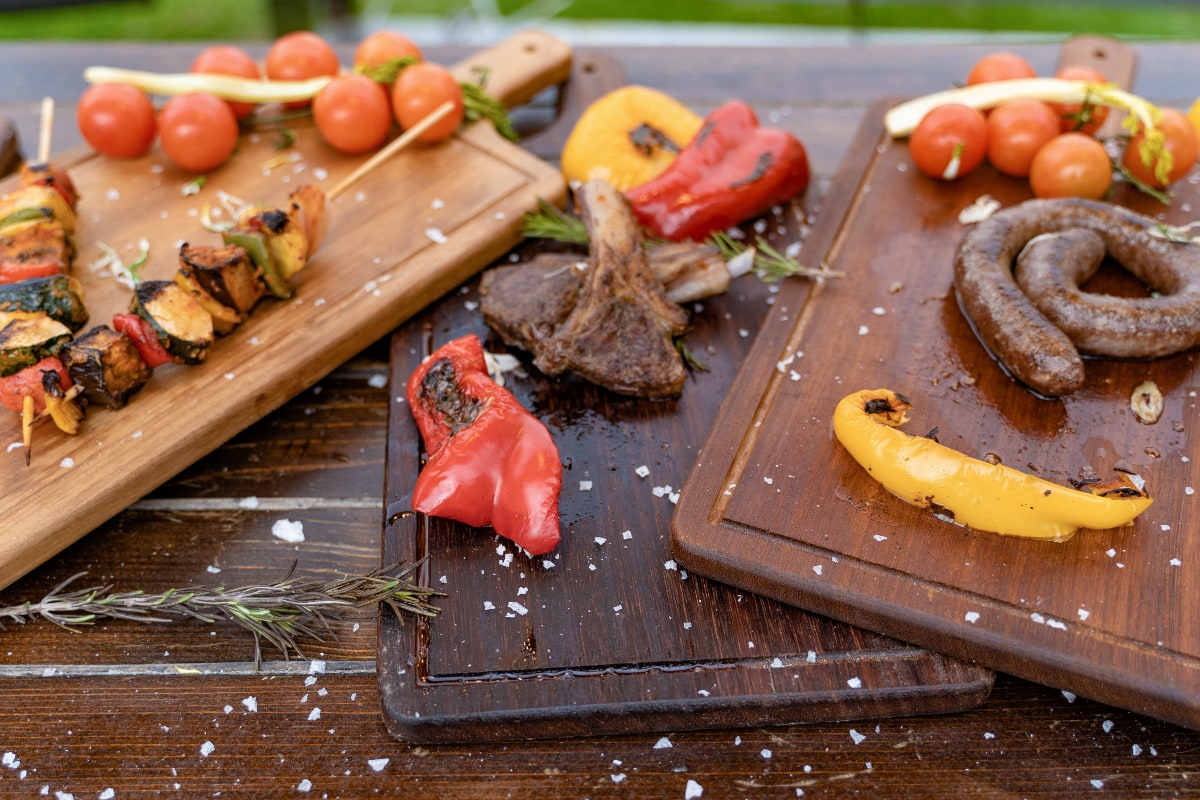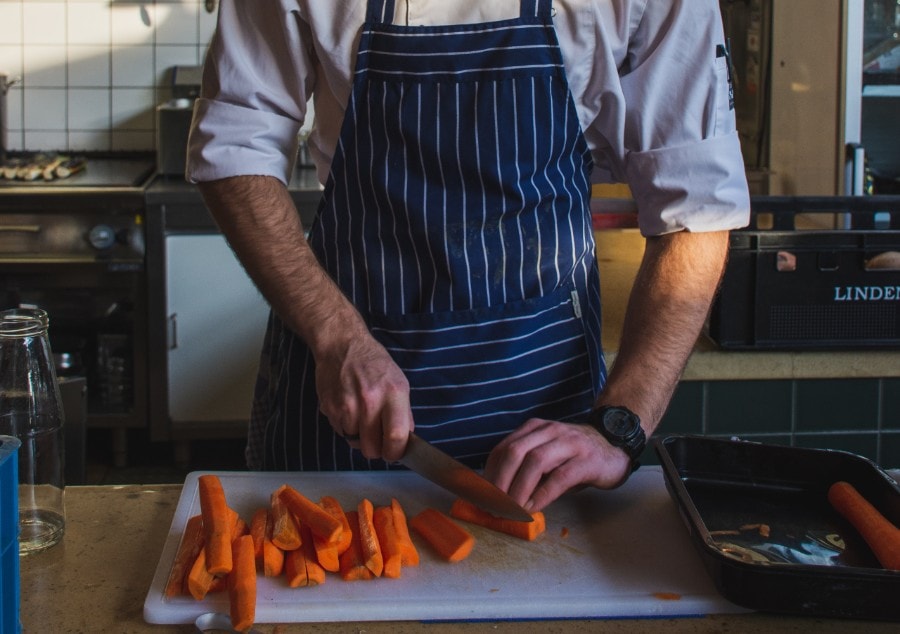Knives are one of the essential tools in kitchen utensils, but they can also be one of the most dangerous. In order to keep yourself and your loved ones safe while cooking, It’s important to follow some basic safety rules.
Why is Kitchen Knife Safety Important?
Knives are one of the most popular kitchen equipment, but they can also be among the most hazardous. Every year, thousands of individuals are wounded while using knives in the kitchen. Knives are responsible for more home injuries than any other type of household item.
Most knife-related accidents occur because people don’t handle or store their knives properly. However, by following some simple safety rules, you can reduce your risk of being injured by a knife.
How to Handle Knives Safely
There are a few basic guidelines that you should follow when handling knives:
1. Always grasp the knife’s handle rather than the blade. Never grab a knife by its blade.
2. Keep your hands and fingers away from the blade. Ensure that your fingertips are not in the blade’s path when holding a knife.
3. Always chop on a cutting board. Before you begin chopping, always put a cutting board on the counter or at work. This will safeguard your countertop and save you from making unintentional incisions.
4. Cut away from your body. Always hold the knife away from yourself while cutting food. You’ll be less likely to get wounded if the knife slips this way.
5. Don’t try to catch a knife as it falls. If a knife falls to the ground, don’t attempt to grab it! Instead, allow it to drop and then pick it up.
Kitchen knives safety guidelines
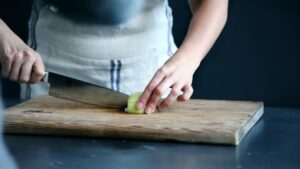
Using Dull Knives
The most essential rules of kitchen knife safety are to keep your knives sharp. Unfortunately, A dull knife, on the other hand, requires a great deal of force to get the same cutting result as a sharp knife. You may inadvertently use portions of the blade that are not intended for chopping food as you search for a location sharp enough to cut your ingredients on your board.
It’s also more likely that your blade will slip and cause harm to something other than food as a result of this extra force and movement.
Even if you succeed in avoiding cutting yourself, dull knives will mince their way through your ingredients, resulting in less attractive results. The simple solution? Keep those knives sharp.
Not Holding the Knife Properly
The way you handle kitchen knives is just as important as keeping them sharp in the first place. The most basic approach, known as the handle grip, is exactly what it implies like: you wrap your hand around the blade’s handle.
The second approach, the blade grip or pinch grip, is primarily used by professional chefs and cooks since it offers far more control. With the blade grip, you grasp the knife in a fist with your hand positioned far ahead of the handle so that your index finger and thumb can pinch the steel at the base of the handle.
This grip provides the most control over the knife and is the one you’ll want to use most often.
Not Using Your Guide Hand Properly
In addition to holding the knife correctly, you also need to take care with your guide hand, which is the hand not holding the knife. This hand should always be kept behind the blade and used to steady whatever you’re cutting.
For more oversized items like melons, squash, and cucumbers, you can use what’s known as a claw grip. To do this, curl your fingers under the thing so that only the tips of your fingers are touching the cutting board while your knuckles act as a shield for your fingers.
This grip offers stability and prevents your fingers from being in harm’s way as you work.
Place Your Finger on the Blade While Cutting
One of the most common kitchen knife safety mistakes is placing your finger on the blade while cutting. It might seem like an excellent way to get more control over what you’re missing, but it’s hazardous and can lead to severe injuries.
Even if you’re using a grip that keeps your fingers safely away from the blade, you can accidentally place your finger on the edge while cutting if you’re not paying close attention. You could quickly lose a portion of your finger or even sever it entirely if this happens.
To avoid this, always keep your fingers behind the blade and be aware of where they are.
Holding your knife correctly is a key component of kitchen safety.
Not Handling Your Knife Safely
One of the most important aspects of kitchen knife safety is knowing how to handle your knives properly. It includes everything from keeping them sharp to using the correct grip and avoiding placing your fingers on the blade while cutting.
It’s ideal for putting a knife on the counter so that the receiver can quickly grab the handle. You may also hold the knife by the handle and roll it back in your palm, leaving the blade’s spine against your hand between your thumb and forefinger for them to grasp readily by the handle.
By following these simple guidelines, you can help prevent accidents and injuries in the kitchen.
Using the Sharp Edge to Scrape Ingredients
A typical kitchen knife safety mistake is using the sharp edge of the blade to scrape ingredients off of a cutting board. While this might seem like a quick and simple method to gather your chopped ingredients, it’s actually very dangerous.
Over time, the sharp edge of the blade will become dull from all the scraping, making it more difficult and dangerous to use.
If you need to scrape ingredients off of a cutting board, use the dull side of the blade or a spoon instead.
Using the Proper Cutting Board
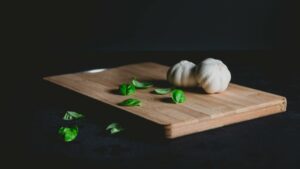
Another kitchen knife safety mistake is using a glass, ceramic, or stone cutting surface. While these materials might seem like they would offer a stable cutting surface, they’re actually very dangerous.
Glass, ceramic, and stone are all extremely hard materials that can quickly dull your knives. Additionally, if you drop a knife on one of these surfaces, it’s more likely to shatter, which can lead to serious injuries.
Instead, use a cutting board made from wood or plastic. These materials are softer and won’t damage your knives as easily.
Using Your Knife for Anything Other than Cutting Food
While a knife might seem like a versatile tool, it’s actually only meant for one thing – cutting food.
Using a knife to open cans, pry things open or cut through non-food items can damage the blade and make it more difficult and dangerous to use.
If you need to open a can or pry something open, use a different tool such as a can opener or screwdriver.
Licking Food Off of a Knife
While this might seem like a quick and easy way to taste-test your food, it’s actually very dangerous.
Licking food off of a knife can introduce bacteria from your mouth onto the blade, which can then contaminate the food you’re cutting. Additionally, licking the blade can dull its edge, making it more difficult to use.
If you need to taste-test your food, use a different utensil such as a spoon or fork.
Where to Find Great Quality Knives
If you’re looking for quality knives that will help keep you safe in the kitchen, Damas Knives is the perfect place to shop. We have a large selection of knives, including chef’s knives, paring knives, and slicing knives, all of which are made from high-quality materials.
We also offer a wide variety of knife sharpening blocks, so you can keep your knives in perfect condition at all times.
Visit our website today to browse our selection of knives and sharpening services.
Thank you for reading our kitchen knife safety guide. By following the simple guidelines we’ve outlined, you can help prevent accidents and injuries in the kitchen. Happy Cooking!

